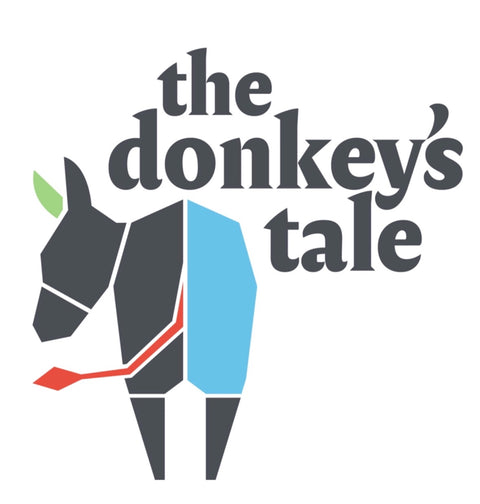Now I am 2
Now I am 2
Your beautiful 2-year-old has come a long way since they were one. More active, mobile, and curious about the world. In this blog, let’s discuss how their developmental needs have changed over their second year old of growth.
Physical Development:
At 1, they were learning to walk and had just started to explore the world. At 2, your child will have become more mobile, able to walk, run, and jump with more confidence.

Gross motor skills have developed, and they can now climb stairs, kick a ball, and ride a tricycle. Kinderfeet and Banwood are examples of quality brands providing great toys to support gross motor skill development.

Fine motor skills have improved, and they can now use a spoon and fork, turn pages of a book, and use fingers to manipulate small objects. Shape sorters, stacking blocks and picture books make the perfect toys to support fine motor skill development.
Cognitive Development:
At 1, your child was learning to understand and communicate with the people around them. At 2, they are developing a greater understanding of language and are able to use words to express needs and wants. Vocabulary has expanded, and they can now understand and follow simple instructions. Memory will have improved, and they can remember things that happened in the recent past. The ability to solve simple problems and puzzles, the use of imagination and creativity have developed.

Memory games using favourite themes, Dinosaurs, Fairies, Vehicles, stimulate memory development. Age appropriate puzzles support cognitive development and fine motor skill development.
Social and Emotional Development:
At 1, your child developed a sense of self and was began to form attachments with the people around them. At 2, they are now more independent with a greater sense of autonomy. They will have developed a stronger emotional understanding and are able to express feelings more effectively. Friendships are beginning to form with other children who enjoy playing with them. The ability to share and take turns has also improved.
At 2 years old, they have different developmental needs than those at 1. They require more stimulation and interaction to help develop cognitive, physical, and social skills. They need a safe and nurturing environment that allows them to explore and learn through play. A consistent routine that provides structure and security is highly beneficial.

Cooperative games support the development of friendship and teach working together. Puppets and soft toys provide endless company and emotional support.

To support these developmental needs, it is important to provide your child with age-appropriate toys and activities. Toys that encourage physical activity, such as ride-on toys, balls, and climbing structures, can help develop gross motor skills. Toys that require fine motor skills, such as puzzles, building blocks, and art supplies, can help develop your fine motor skills. Books and storytelling can help develop language and cognitive skills. Playing with other children can help develop social skills.
As a 2-year-old, your child may also need more supervision and guidance to ensure their safety and well-being. It is important to create a safe and child-friendly environment by removing any potential hazards and keeping dangerous objects out of reach. It is also important to provide consistent and positive guidance to help your child develop appropriate behaviour and social skills.
In summary, your 2-year-old will have made significant progress in their development since their first birthday. You can support your child’s development through providing a safe and nurturing environment, age-appropriate toys and activities, and consistent routine.
By providing the right kind of support, your child can continue to thrive and reach their full potential in all areas of development.
Great toy options to support the development of the 2 year old in your family includes
- Building blocks: To develop motor skills, hand-eye coordination, and problem-solving skills. Building blocks come in different shapes and sizes, which helps in the development of a child’s spatial awareness.
- Shape sorters: Shape sorters are another excellent toy for a 2-year-old. They help develop hand-eye coordination, problem-solving skills, and cognitive skills. Shape sorters come in different shapes and colors, which helps in the development of a child’s color recognition and shape recognition.
- Puzzles: Puzzles are a great way to help a 2-year-old develop problem-solving skills and cognitive skills. Puzzles come in different shapes and sizes, which helps in the development of a child’s spatial awareness. Puzzles with big, colorful pieces are perfect for 2-year-olds as they are easy to grip and manipulate.
- Play kitchen sets: Play kitchen sets are a great way to encourage imaginative play and help develop social skills. They help children learn about cooking and meal preparation, which is an important life skill. Play kitchen sets come in different sizes and styles, which helps in the development of a child’s creativity.
- Musical instruments: Musical instruments are a great way to help a 2-year-old develop a love for music. They help develop motor skills and hand-eye coordination. Musical instruments come in different sizes and styles, which helps in the development of a child’s creativity.
- Ride-on toys: Ride-on toys are an excellent way to help a 2-year-old develop gross motor skills. They also help in the development of balance and coordination. Ride-on toys come in different styles and sizes, which helps in the development of a child’s spatial awareness.
- Art supplies: Art supplies like crayons, markers, and paint are a great way to encourage creativity and imagination. They also help in the development of fine motor skills. Art supplies come in different colors and can be used to create different shapes and patterns, which helps in the development of a child’s spatial awareness.
- Picture books: Picture books are a great way to help a 2-year-old develop language skills and cognitive skills. They also help in the development of imagination and creativity. Picture books come in different themes and styles, which helps in the development of a child’s creativity.


